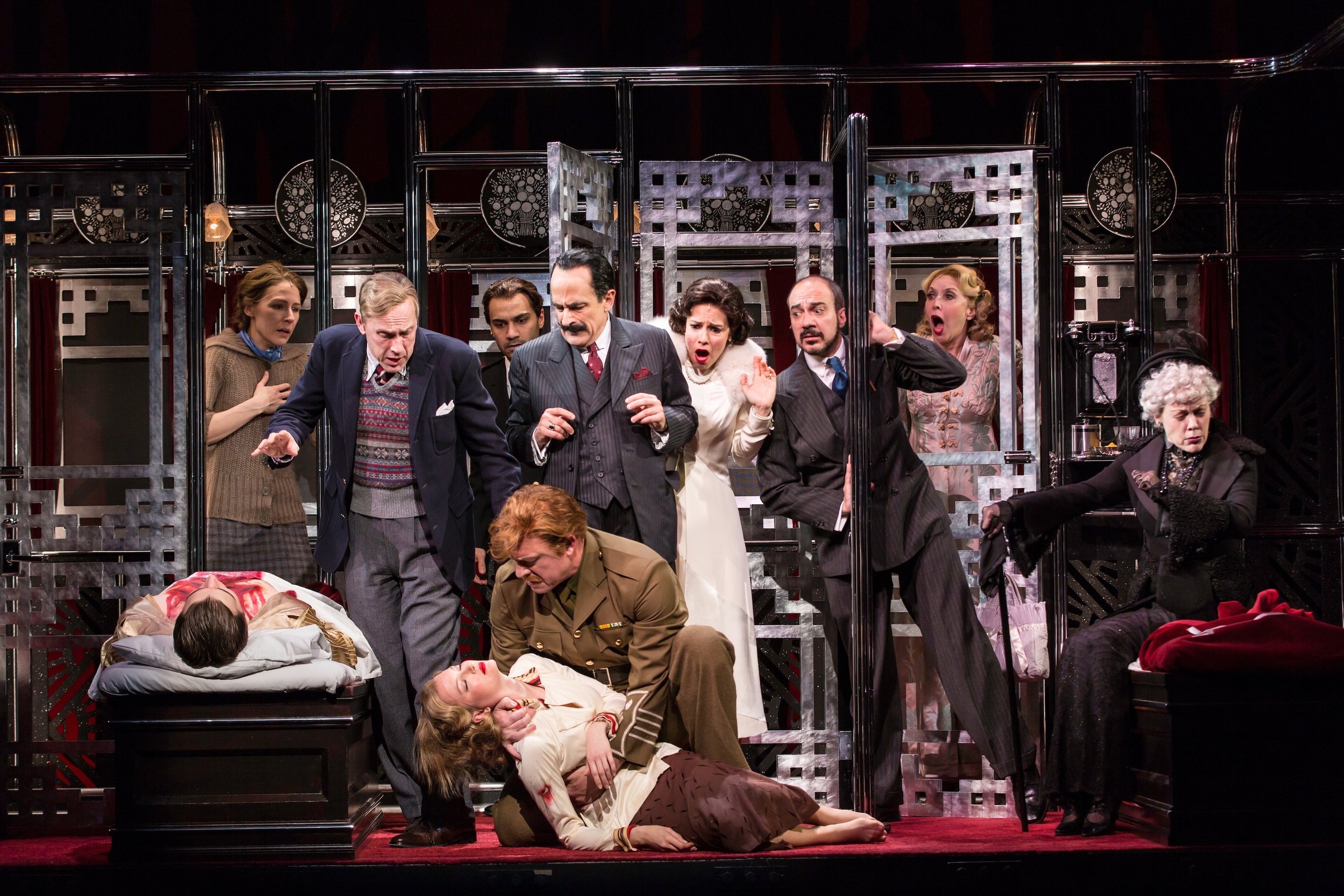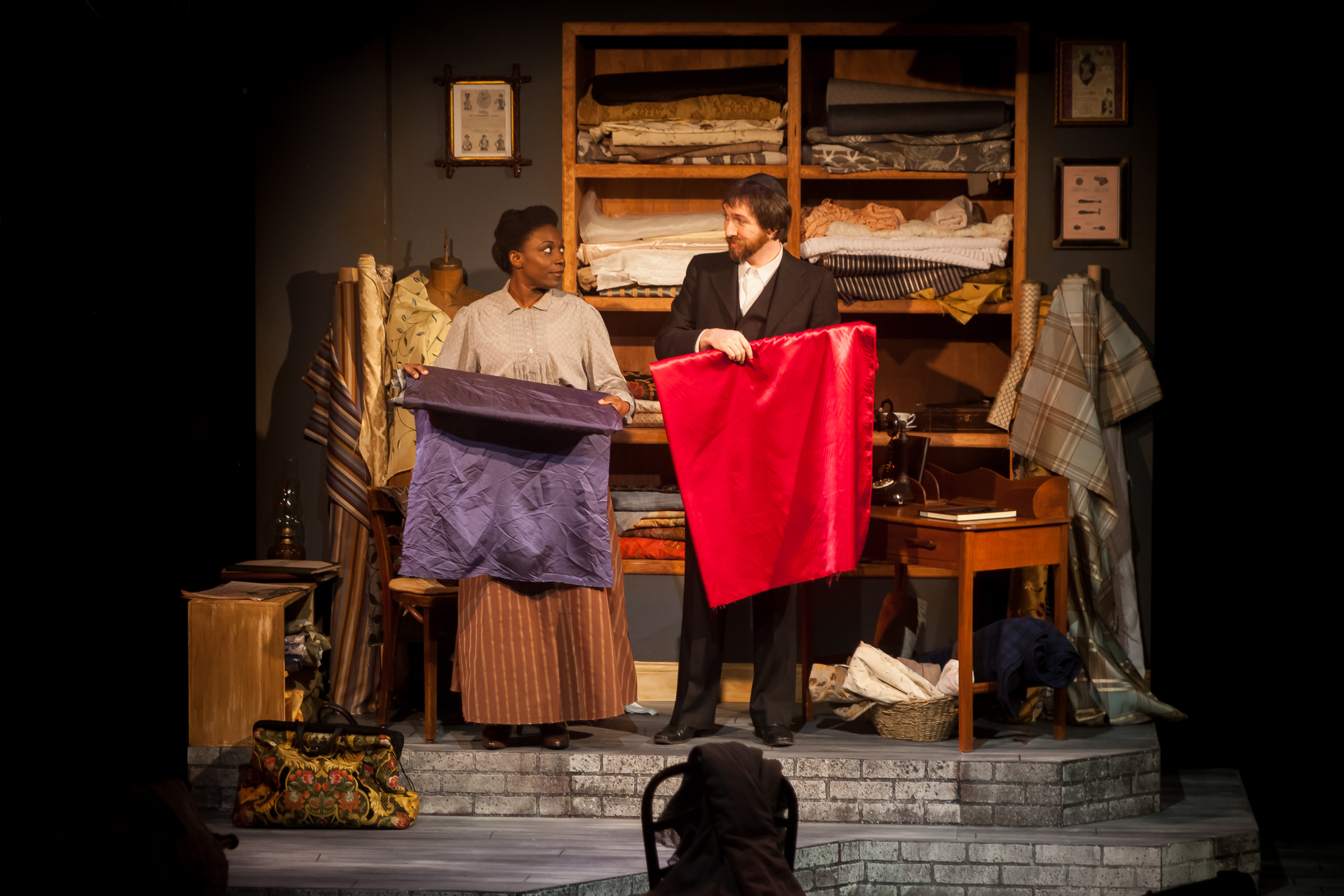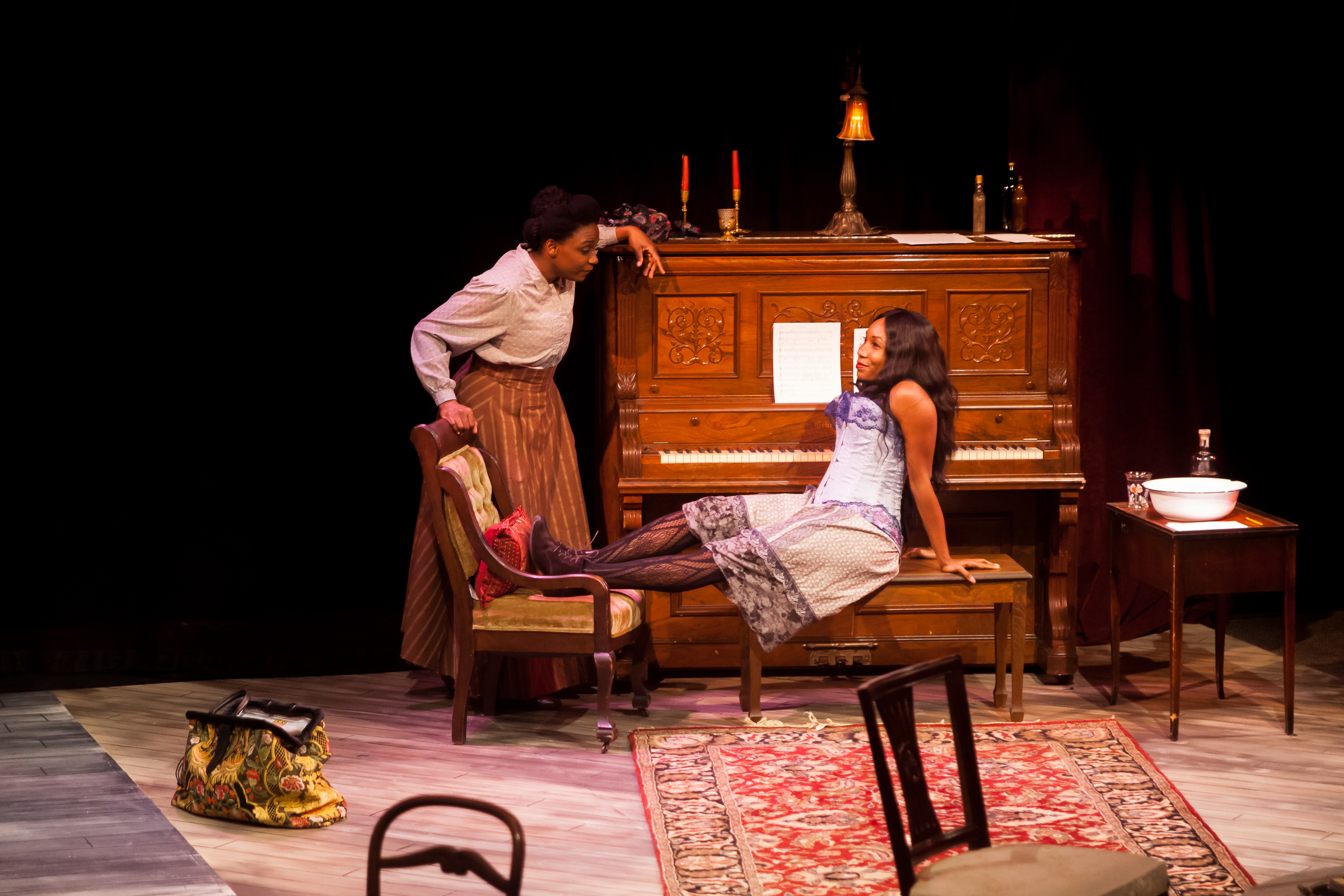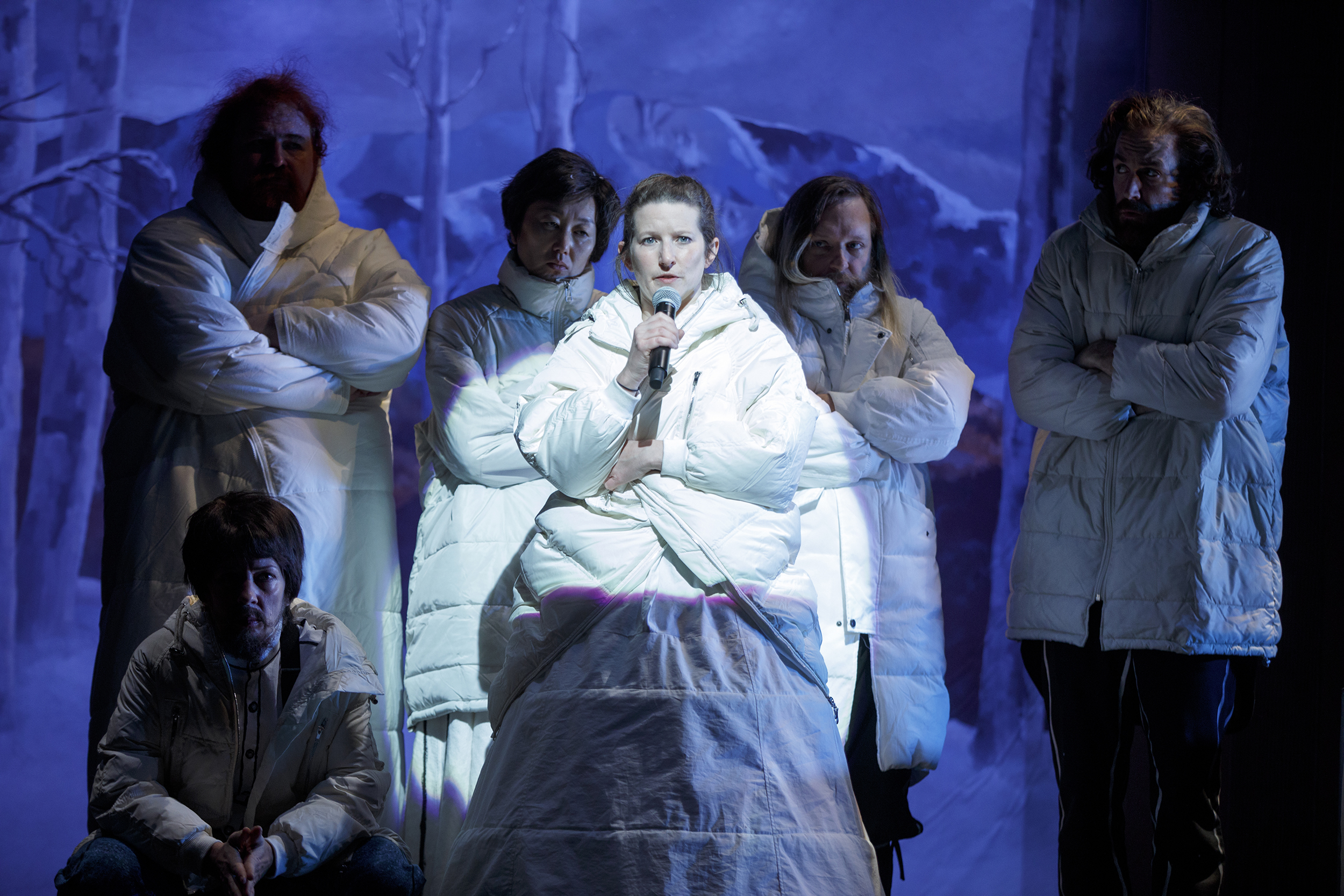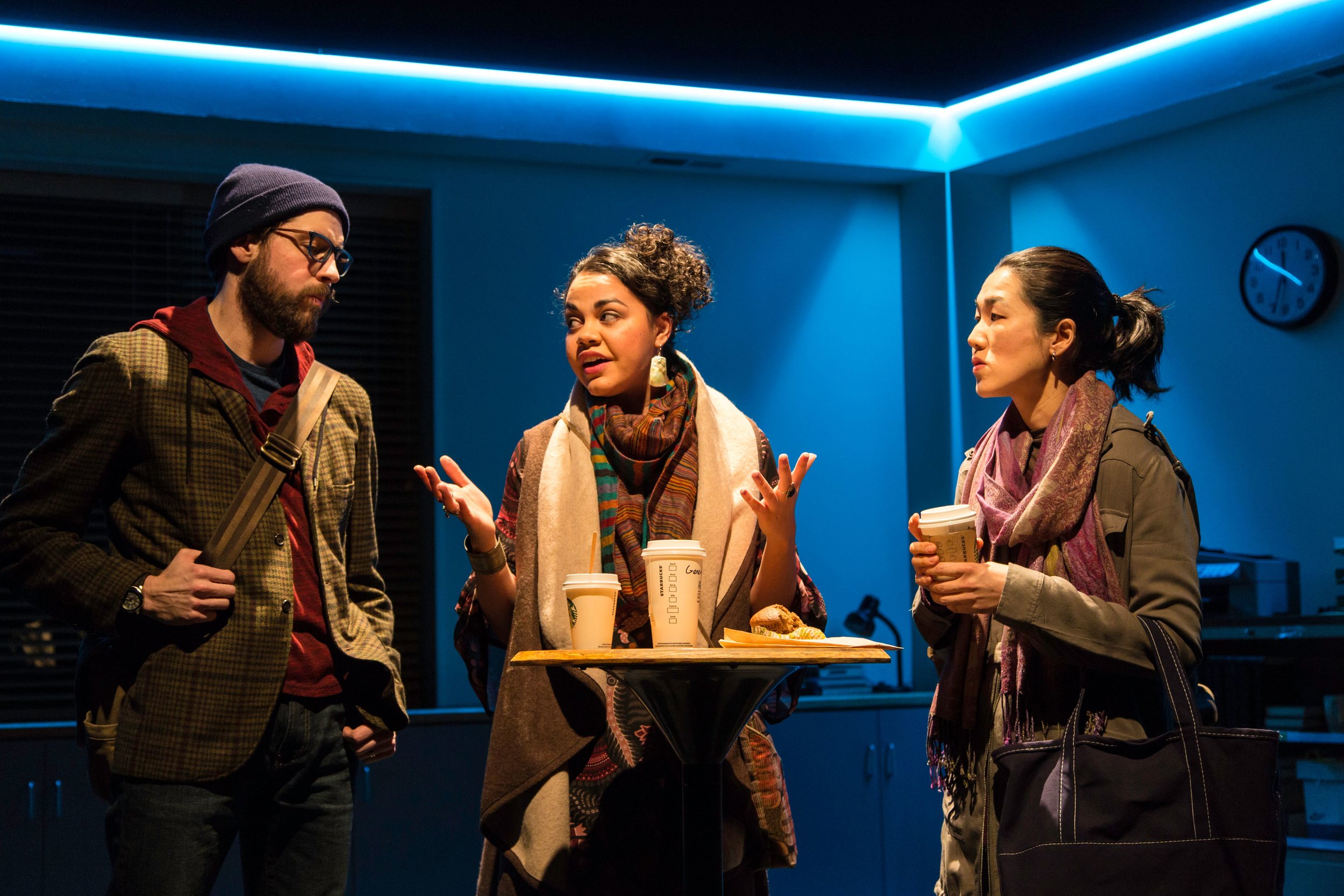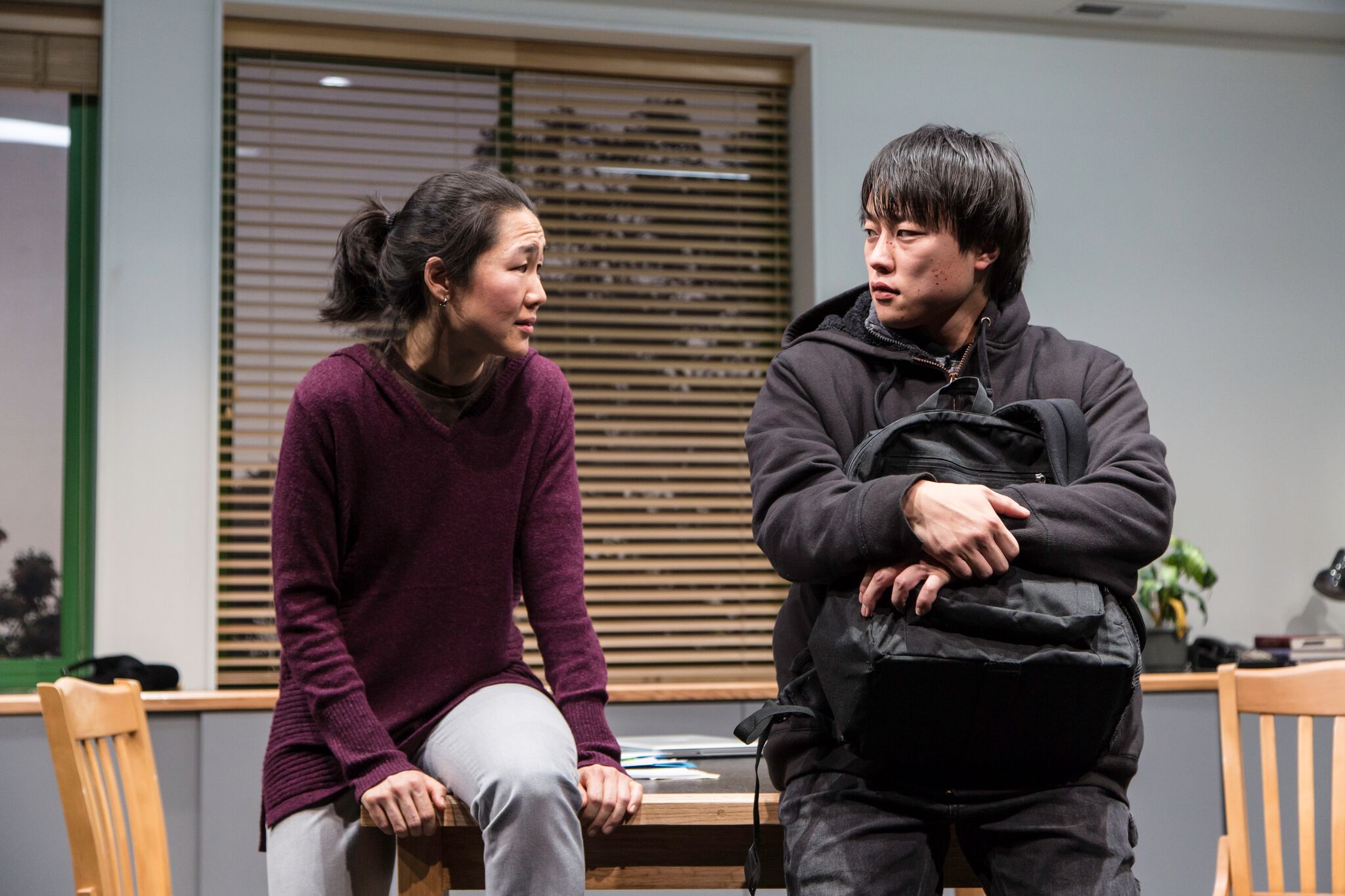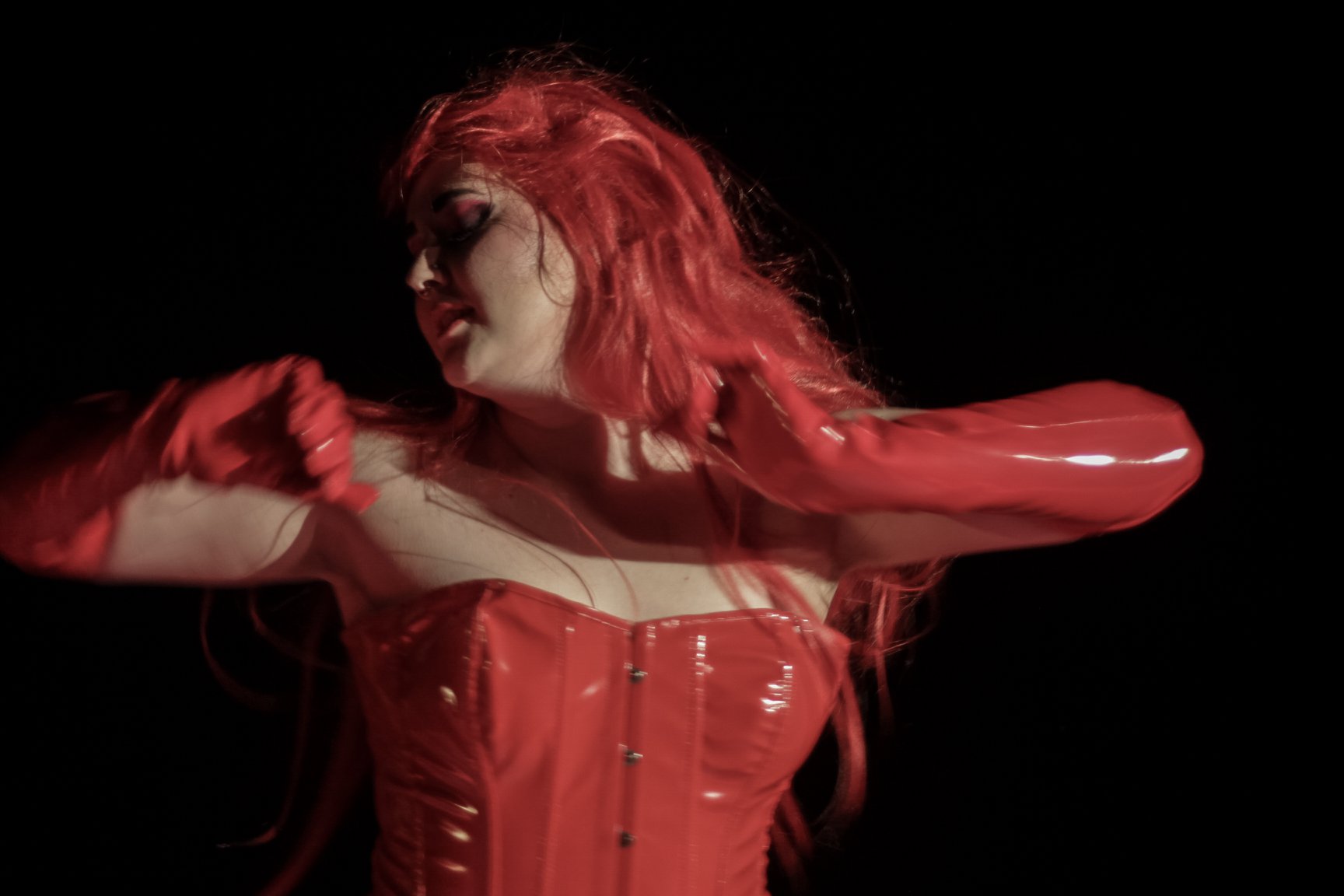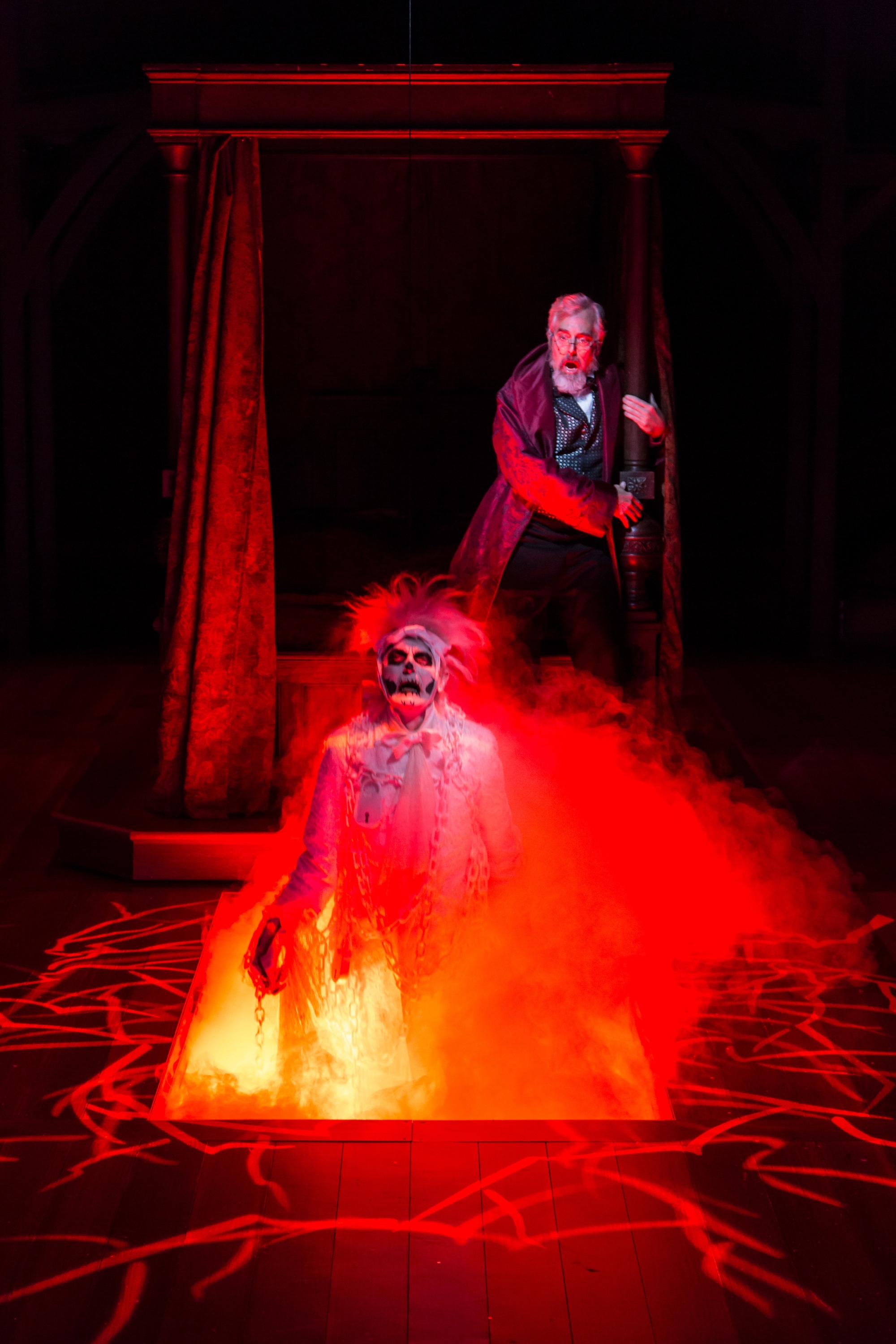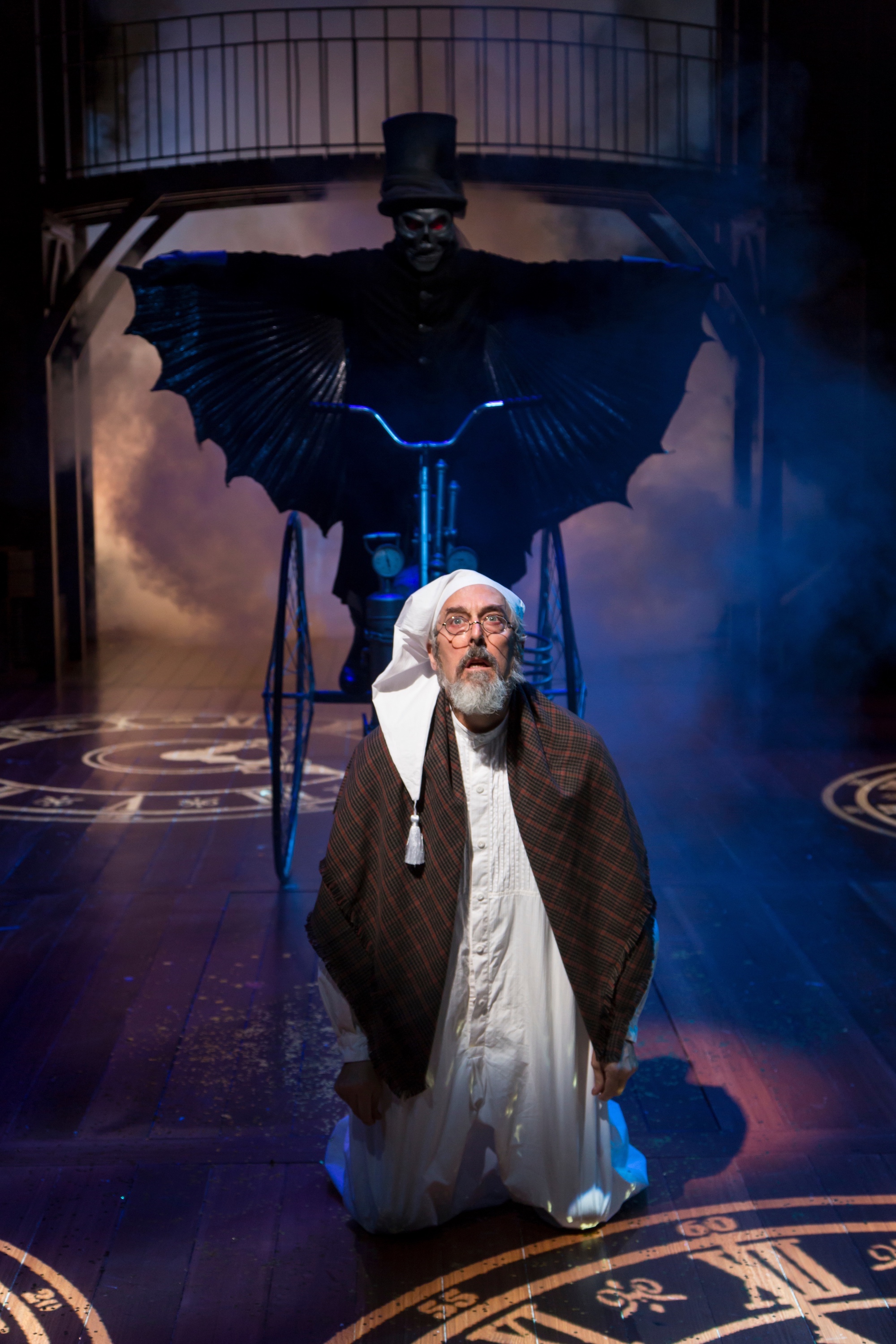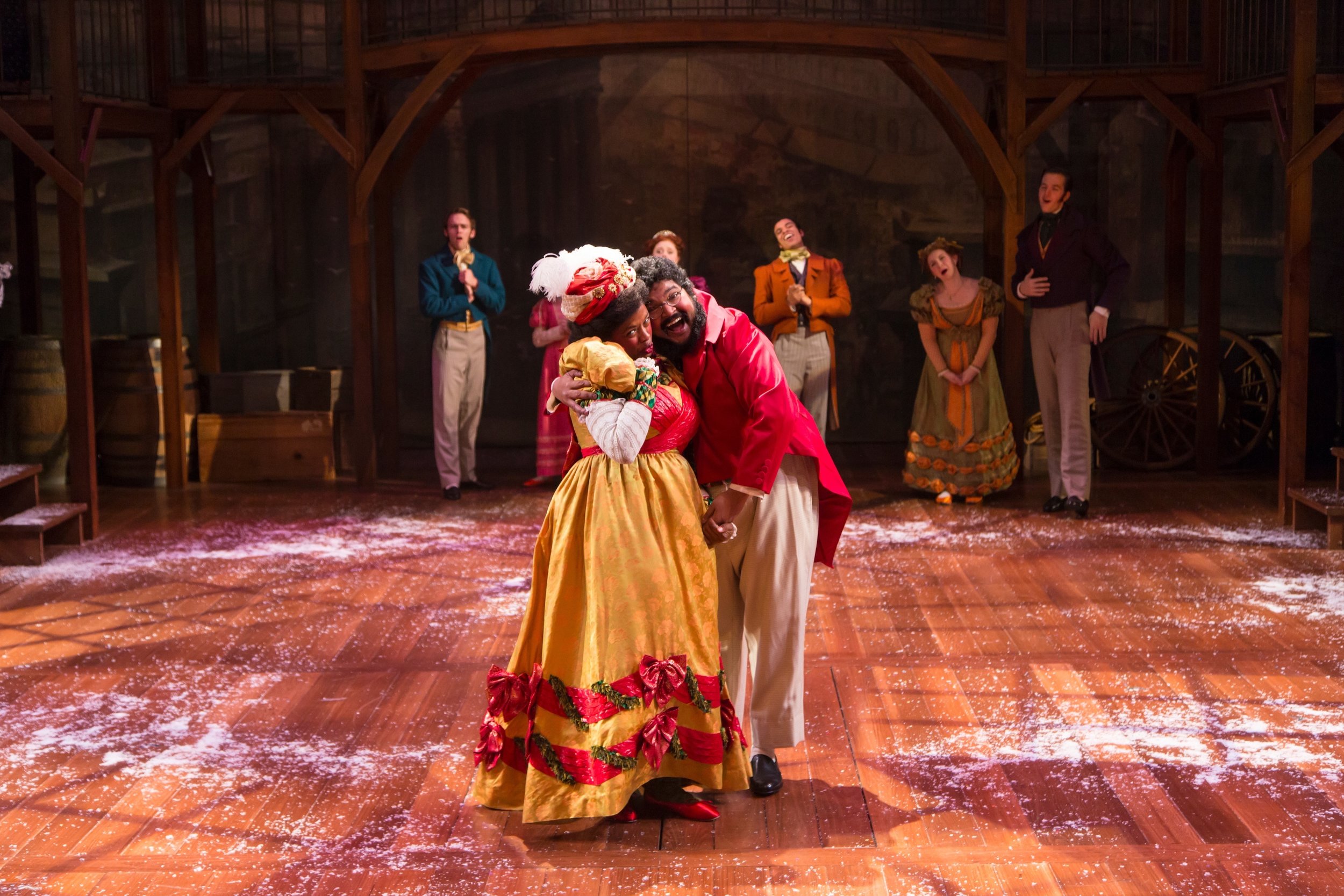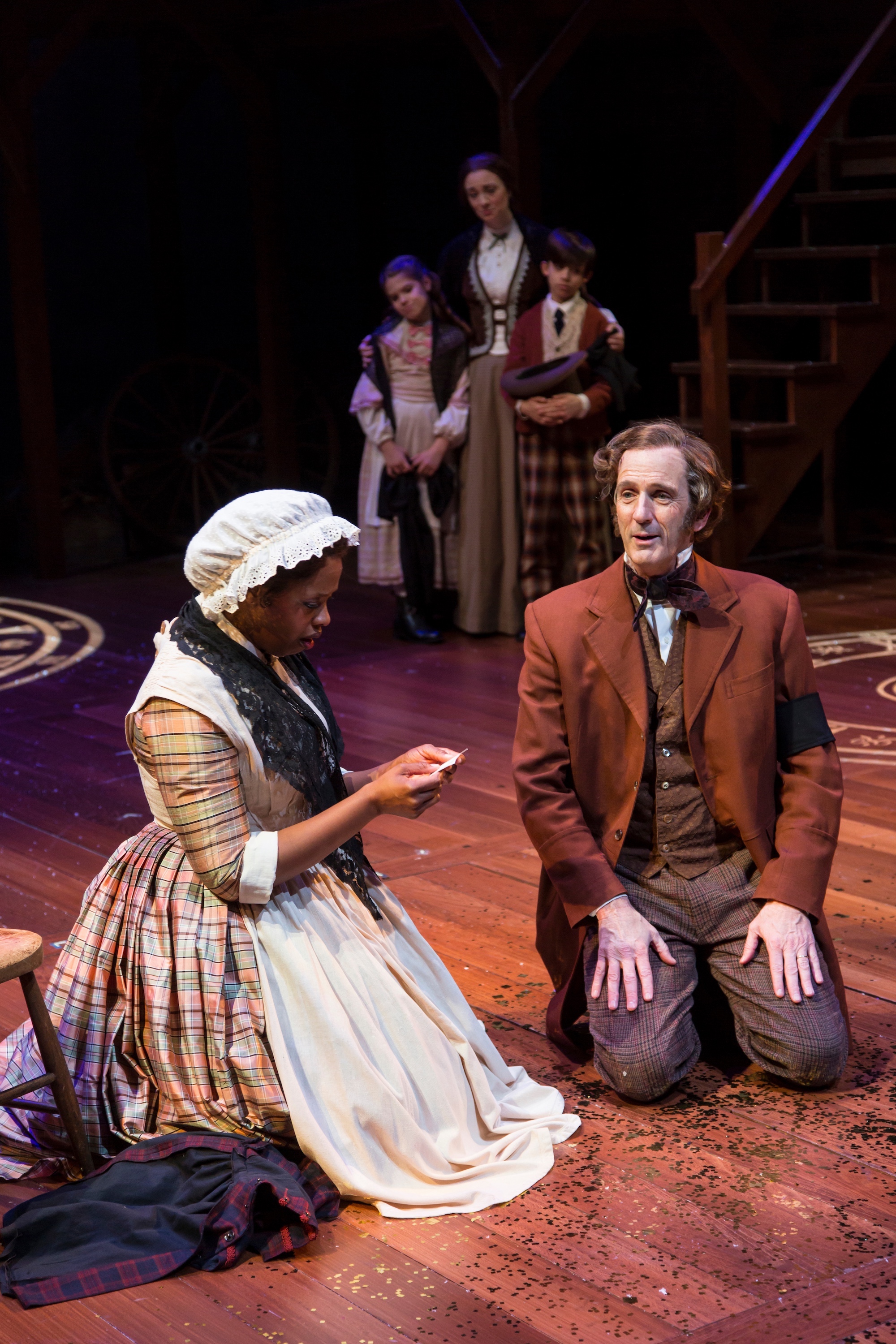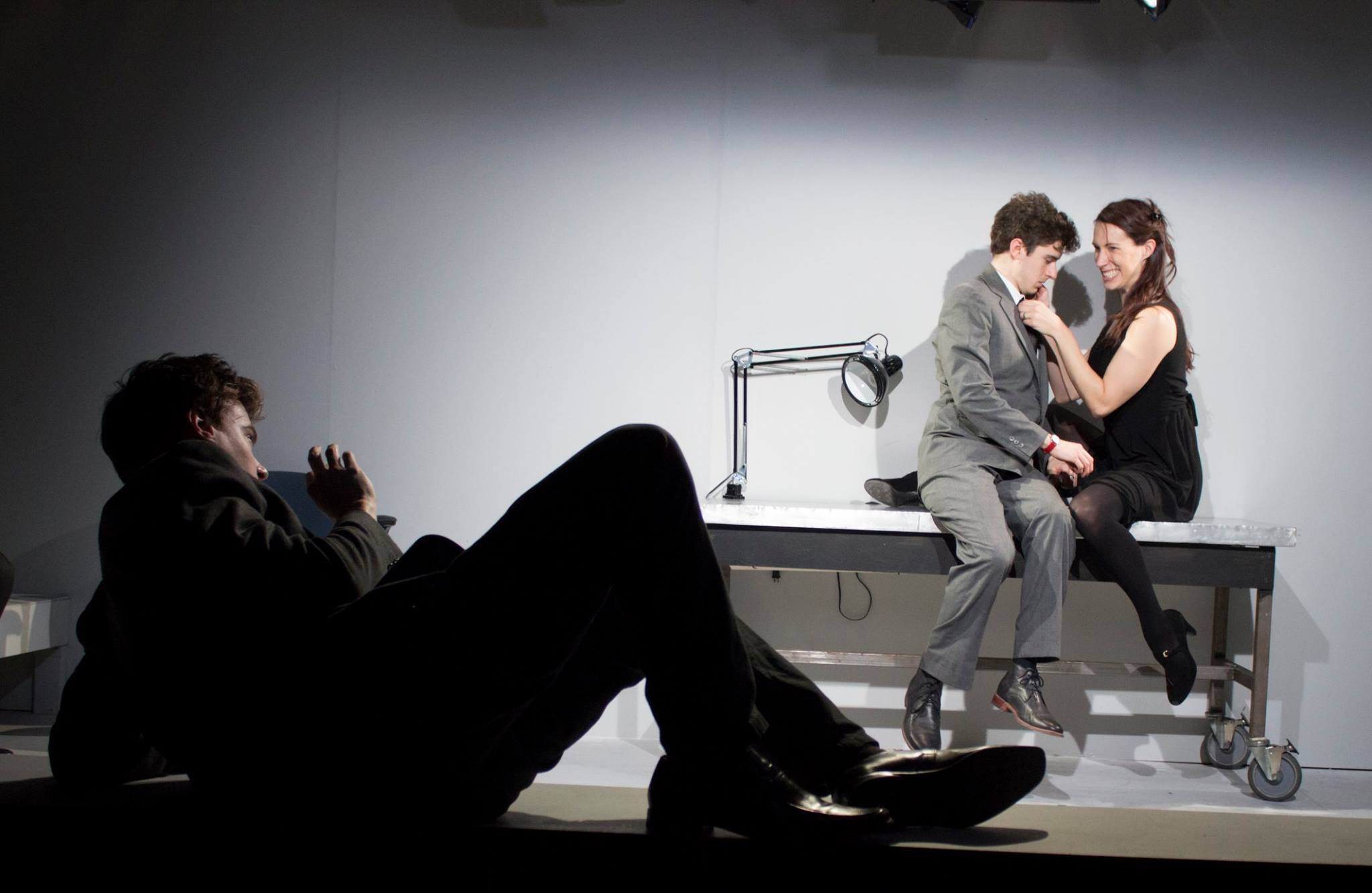Review of The Guadalupes, Yale Cabaret
Yale Cabaret’s 50th season has featured more than a few new works with a decidedly autobiographical focus. In Arturo Soria’s Ni Mi Madre, Soria, a second-year actor, played his mother. In This American Wife, third-year actor Patrick Foley and second-year dramaturg Michael Breslin played some version of themselves, speaking, at times on video, about their passion for Real Housewives of New Jersey. And in second-year playwright Jeremy O. Harris’ play the feels (kms) the characters spoke at times as some version of the playwright. In the show currently at the Cab, first-year playwright Noah Diaz acts in and comments on his own play, The Guadalupes, with first-year actor JJ McGlone playing Noah and sometimes acting as an onstage videographer of the show. The play’s focus is on Diaz’s relationship to his late grandmother, Guadalupe, who died this past summer, and Diaz’s way of sharing some of the burden of that event.
Noah Diaz in The Guadalupes (photos: Yale Cabaret)
What all these works share, one could say, is a similar concern with the areas where theater—as contrived event—and actual life confound and expound one another. Since all these young artists are in the Yale School of Drama, theater is a constant concern, and we can see how that plays out depends, in part, on their focus. As a playwright, Diaz puts the actual mechanics of writing on the stage at key moments, as for instance typing lines on his laptop that now become part of the play and also having McGlone scroll through notes for earlier drafts of the play. As a performer, he also puts himself forward as a kind of unassuming narrator figure, claiming he didn’t intend to be in the play—which may be true, even though it’s hard to imagine how the play would play without him.
Much is made of the playwright’s problem of making a play out of an experience that is elusive in its meaning. Most of us experience the deaths of our grandparents and eventually the deaths of our parents, and how those events change us is something we might not fully comprehend for quite some time. Diaz, with the experience still fresh, is trying to see what difference such a loss makes. The most powerful part of the show is when Diaz, as his grandmother, sits in an armchair while McGlone asks him a series of yes or no questions while videoing his face in close-up. Certainly an actor could sit in that chair and pretend to be someone’s grandmother, but what the camera finds in Diaz’s face are traces of his own, very individual sense of his own, very individual grandmother. In her short answers, we see “her” (through him) remember the memories he has of her. It’s very moving.
Noah (JJ McGlone), Other Noah (Noah Diaz)
The play makes a virtue of naiveté, with McGlone at one point asking audience members for any photos of their grandmothers they might have on their phones. The off-hand tone plays against the enormity of death, in a sense, but it also treats grand-parental mortality as the common event it is. The relation that bedevils Diaz is the one between the beloved figure who helped to provide an early sense of familial identity and the failing person who meets her end while the grandson has just got his start in life. That dovetailing is part of the text as well, as Diaz makes it clear that his grandmother died while he was writing a play his first summer after acceptance at the Drama School. It’s such a neat interplay of contrived drama (the theater) and actual drama (a loved one’s death) as to be almost irresistible as a subject for a first-person play.
There could be many ways that might go (and Diaz’s notes let us see some ideas), but what The Guadalupes does with the “material” is to make it both a form of wake that evokes with feeling a departed life, and a form of personal and artistic critique—we never doubt that Diaz is struggling with what he can dramatize about his grandmother and how, and that struggle is retained in the drama we watch. There are some interesting moments that play with how we assume the process takes place, as when Diaz objects to a segment he says was cut and McGlone insists on it. The segment has Diaz reading Spanish phrases, as his grandmother, with nothing like a native speaker’s fluency as McGlone, as Noah, replies.
The play takes its name from the stated fact that both Diaz’s grandmother and grandfather were named Guadalupe. This interesting tidbit sets up the name as common in the family and might have been Noah’s name. Early on, McGlone puts cut-out photos of Diaz’s parents on camera to recreate fantasized dialogues from their early romance which leads to their son’s birth. Such bits of autobiographical detail are sprinkled through the play but none land with quite the dramatic power as the close-up video of Diaz as the grandmother in the chair, nor the comic zest of a swift re-enactment of a favorite scene from the disaster film Twister (viewing it together was a shared reference point for grandmother and grandson).
Noah (JJ McGlone)
Often, as McGlone busies himself at the laptop desk with video and microphone, Diaz paints a wall to signal his grandmother’s regular repainting of her rooms. The act becomes a figure for the many different colors certain figures add to our lives but also the problem of coloring-in the gaps in memories—Diaz, both as himself and his grandmother, claims more than once that his “memory isn’t what it used to be.”
Great artistry has gone into this seemingly artless and improvised production, directed by Emma Weinstein. While The Guadalupes shares some themes and approaches with other Cabaret shows this season, it has a stronger sense than most of the workshop/studio ambiance that the Cabaret space sustains so well. And that might be the best possible lead-in to the upcoming Satellite Festival, March 29th-31st, which will feature a variety of short works, many highlighting experimental and technical features of theater.
The Guadalupes
By Noah Diaz
Directed by Emma Weinstein
Co-Producers: Sylvia Xiaomeng Zhang, Kathy Li; Scenic Designer: Stephanie Osin Cohen; Costume Designer: Alicia Austin; Lighting Designer: Emma Deane; Sound Designer: Liam Bellman-Sharpe; Projections Designer: Erin Sullivan; Dramaturg: Michael Breslin; Stage Manager: Samantha Tirrell
Cast: Noah Diaz, JJ McGlone
Yale Cabaret
March 8-10, 2018














